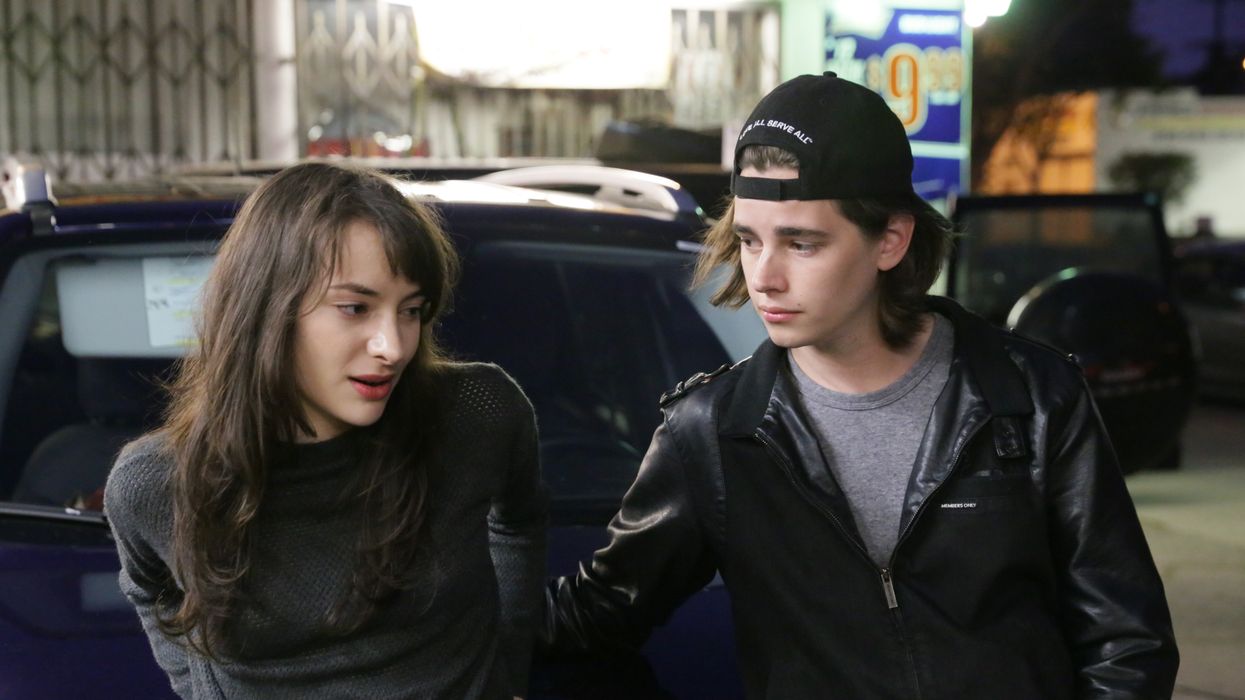5 Ways to Get Better Performances from Actors in Short Films
Why is it so damn difficult to get great performances in a short film?

There are so many challenges in short-form acting; actors have less time to unroll their characters on screen, for starters. But with some thoughtful preparation, a short performance can make a lasting impression. Mylissa Fitzsimmons tackles performances in her latest short film, That Party That One Night, which recently premiered as the first in a year-long roll out of shorts from the Bureau of Creative Works. And having built a career off of short, performance-driven films, Fitzsimmons has learned a thing or two about the process.
I had a chance to sit down and talk to Fitzsimmons about her process for the Bureau, and below are the most important takeaways I gleaned from our conversation. Some of these tips apply to feature length work, but with tighter shooting schedules and smaller budgets (with less room for mistakes), they are especially useful for the short form. There are no shortcuts in shorts!
1. Get no-nonsense feedback on your writing
If there’s one thing that can set back an actor’s hard work on a short film, it’s writing that is trying to be realistic but isn’t. From dialogue or character motivations, making sure your script of any length rings true is crucial to nail down before you bring the actors in. Says Fitzsimmons:
When I'm writing something, I send it out to very few people. And I try to go across the board in gender and ages, to see if it kind of resonates with everybody…I think it's very important to give my work to people who are not going to just say, "No, you did a really good job, I really like it." That's not beneficial for me. It's very important, especially in the beginning stages, to trust the people that you're sending it to, that they're going to be honest with you. Otherwise, they're wasting my time, I'm wasting their time, and then I'm going to end up wasting other people's time and money.

2. Use playlists and lookbooks to create an offscreen backstory
Because a short film is so brief, you need to work that much harder to make sure the characters are completely developed people in the world of your story. Fitzsimmons describes:
I have a character book, and I want to be able to allow the actor to mine from that. I want to allow the actor to shape and mold themself but still stay within the world. I need to be able to present, ‘here's the world that you live in.’ I want to give them enough to help them make their choices as an actor that will come from that world I've created. I also make musical playlists for all my characters, and I give those to actors. I write a backstory to them and who they are, what books they would have read, what movies they would have seen, to like help them, along with their own decisions that they've made, and their own choices that they've made.

3. Consider skipping the rehearsal
If the characters warrant it, consider having your actors meet under similar circumstances as they would in the film. Like, if they’re an old married couple, have them spend a few hours doing housework. If they’re a pair of awkward teens who don’t know each other that well, consider Fitzsimmons’ strategy:
I wanted [the protagonists] to meet just to see like what that chemistry would be, but I purposely did not want them to rehearse together because I didn't want them to be comfortable around each other. I didn't want her to comfortable around him, especially, because she's not supposed to be. This is the boy that she's had a crush on for four years of her life, and all of the sudden she finds herself alone with him.
4. Let actors work within specific blocking
Keeping the takes to a minimum, as well as asking actors to keep within a very carefully chosen choreography of blocking and camerawork, can actually give them the creative freedom to deliver great performances.
There were five emotional beats that I needed to have in this film that were very important, and those five emotional beats were the ones that my DP Pedro and I blocked out. We discussed how the camera would move and where it would start and where it would end and on what line it needed to be where. There weren't a lot of takes. The actors were prepared, they knew their lines. We would do quick walking with them before, going, okay, as long as you end up here at this time and here on this point, that's going to work out with the blocking.
5. Keep your crew small
When it comes to a short film or a scene that’s all about the actors, there is nothing more distracting than a big, well-intentioned crew. So if you don’t need them, keep it small. According to Fitzsimmons:
Behind the camera, there were very few people. I think the smaller the crew, the more intimate the production is. Especially with a scene like this, that is kind of intimate. If there's not stuff going on in the background, for me, it feels more believable that I'm actually just being a voyeur and watching them. I didn't want a lot going on in the background, because I feel like there's so much going on in the scene between them, that that was enough for me.
If you want to catch more of our conversation on the Bureau of Creative Works podcast, Fitzsimmons also describes her experiences in writing about universal concepts and editing with a director, among other filmmaking insights.
Do you have experience in getting good performances from actors on a short film? What are your tips?



 No Film School's coverage of
No Film School's coverage of 









